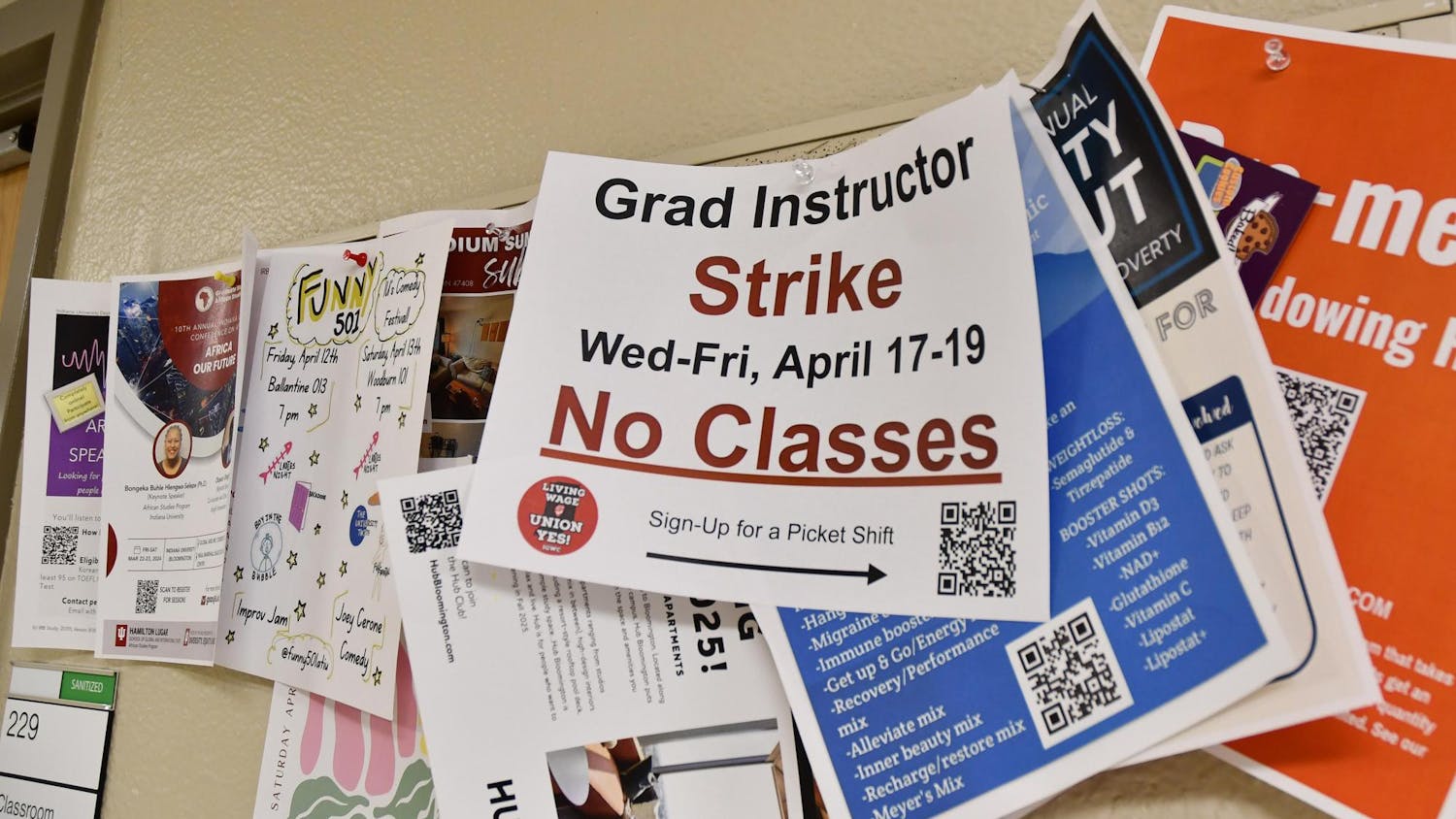The blue lights are unevenly distributed, and campus-crime hot spots are far from the lights, according to IU Police Department crime data mapped by the Indiana Daily Student from Oct. 1, 2015, to April 4, 2016.
There are 56 emergency phones that dial IUPD when pressed, according to documents from Building Systems, the campus unit responsible for maintaining the blue lights.
Most lights are bunched in the southern academic part of campus.
There are some scattered across the northern part of campus where most residence centers and apartments are located, but roughly twice as many are in the southern half of campus.
More than half of the lights are in parking lots or garages on campus.
Female faculty surveyed in the 1980s identified these areas as ones in which they felt particularly unsafe.
The placement of the blue lights is inconsistent with crime trends on campus in the last six months.
Crime tends to cluster around McNutt Quad, Wright Quad, Willkie Quad, the School of Public Health and greek houses.
There is only one blue light in the northwest neighborhood where Foster Quad, McNutt Quad and Briscoe Quad residence halls are located, one light diagonally across the street from Wright and one emergency phone on the northeast side of the School of Public Health.
There are no blue lights on North Jordan Avenue, home to many fraternity and sorority houses, and none in any athletic complex areas, including Memorial Stadium and Assembly Hall.
Although IUPD does not have primary jurisdiction off campus, about 10 percent of the crimes answered by IUPD since October occurred outside of campus boundaries. No blue lights exist off the main campus, except for outlying IU properties and in the downtown-Kirkwood area.
In addition to off-campus crime, much crime occurs indoors, usually perpetrated by someone the victim knows, IUPD Capt. Andy Stephenson said.
The emergency phones are intended to deal with random attacks on people out in the open.
“The types of crimes that would be reported through the use of those phones don’t happen very often,” Stephenson said.
When those types of crimes do happen, they usually happen in a private location, such as someone’s dorm.
If they do happen out in the open, students almost always dial 9-1-1 on their cellphone.
The phones were installed in the late 1980s, before cellphones.
In 2016, a vast majority of 9-1-1 calls have been made via cellphone, Stephenson said.
Stephenson said the four legitimate calls from the blue lights, in the collective memory of veteran IUPD officers, occurred mostly in the early 2000s.
Two of these calls were for fights, one was for a suspicious person and one was for an injury in a parking lot.
“Unless you happen to be standing close to the phone, people aren’t going to go out of their way to use one of those phones when they have a cell phone in their possession,” Stephenson said.
Meanwhile, new blue lights are installed with every new construction on campus, said Andrew Lowry, building systems assistant director.
He said the most recent installation is by the Global and International Studies Building, which was constructed last year.
Mark Bruhn, associate vice president for public safety and institutional assurance, said he believes the lights potentially prevent crimes.
He said this benefit of the lights cannot be quantified with data.
All parties involved with the lights, from Stephenson to Lowry to Bruhn and John Applegate, another administrator who oversees IUPD, say the phones exist to provide a sense of security.
IUSA Chief of Staff Sara Zaheer said this is a false sense of security.
She said she appreciates the proactive nature of the lights, but worries the lights encourage people to take fewer safety precautions.
She also said some administrators with whom she works are aware students do not even know how the lights work.
Some students believe users should press one light’s button, run to press another and repeat this process so police can track someone in distress, Zaheer said.
Other students believe a physical shield or some other form of protection will spring from the lights to help people in danger, she said.
“Having blue lights isn’t enough,” Zaheer said. “We have the capability of doing more.”



